Westminster Abbey: The Gothic Jewel of London

Introduction
Westminster Abbey, located in the heart of London, England, is a cornerstone of British history and Gothic architecture. This magnificent abbey has served as a place of worship, a royal coronation site, and a burial ground for monarchs and notable figures for centuries. Its architectural grandeur and historical significance make it one of the most iconic landmarks in the world.
The abbey’s importance extends beyond its religious functions. It is a masterpiece of Gothic architecture, featuring innovative structural designs, intricate stained glass windows, and impressive sculptural decorations. These elements collectively showcase the architectural prowess and artistic ingenuity of the medieval period. Westminster Abbey is not only a historical monument but also a testament to the enduring appeal of Gothic art and architecture.
In this article, we will delve into the historical background, Gothic architectural features, stained glass and interior decoration, sculptural and monumental decoration, religious and cultural importance, restoration efforts, and the contemporary relevance of Westminster Abbey. Each section provides an in-depth exploration of the abbey’s multifaceted significance, highlighting why it continues to captivate visitors and scholars alike.
Historical Background
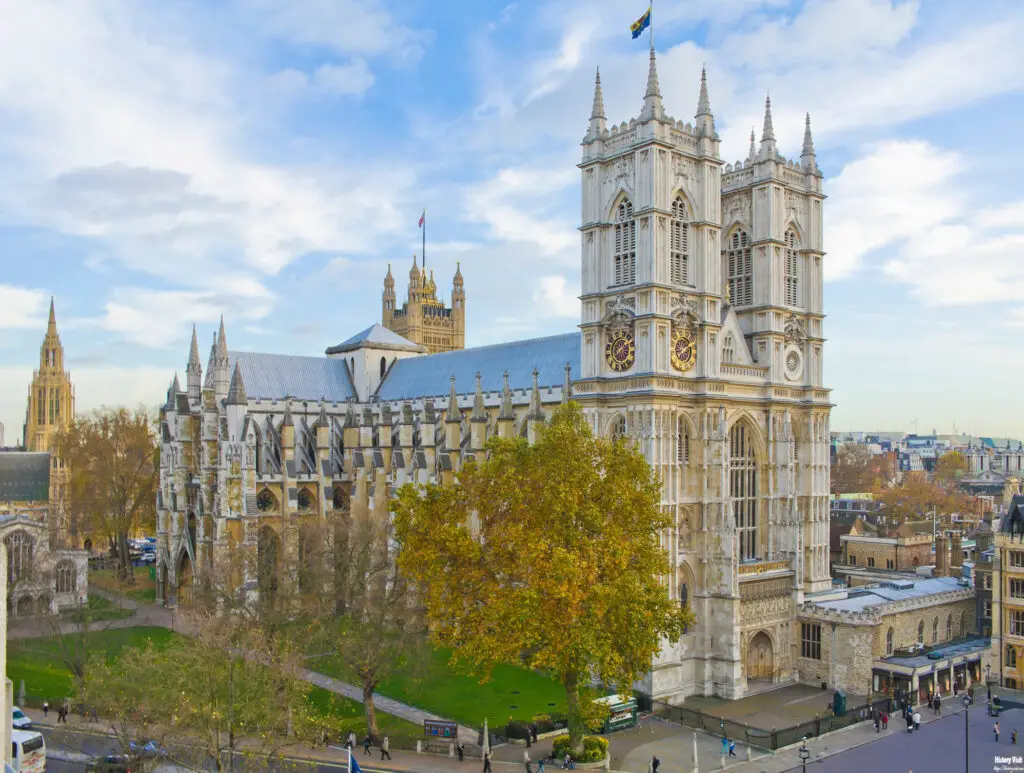
The origins of Westminster Abbey date back to the 10th century when a Benedictine monastery was established on the site. However, the construction of the current Gothic structure began in 1245 under the orders of King Henry III, who sought to create a grand monument befitting the English monarchy. The abbey was built over several phases, incorporating both Norman and Gothic architectural styles.
One of the most significant periods in the abbey’s history was the reign of Henry III, who aimed to create a royal church that would serve as the coronation site for English monarchs. His vision included the construction of a grand Gothic church, inspired by the great cathedrals of Europe. This ambitious project set the foundation for Westminster Abbey’s enduring legacy as a symbol of royal authority and religious devotion.
Throughout its history, Westminster Abbey has been the site of numerous important events. It has hosted the coronations of nearly every English and British monarch since William the Conqueror, as well as royal weddings and funerals. The abbey’s rich history is reflected in its architecture, which has been shaped and reshaped by the events and personalities that have passed through its doors.
Gothic Architectural Features
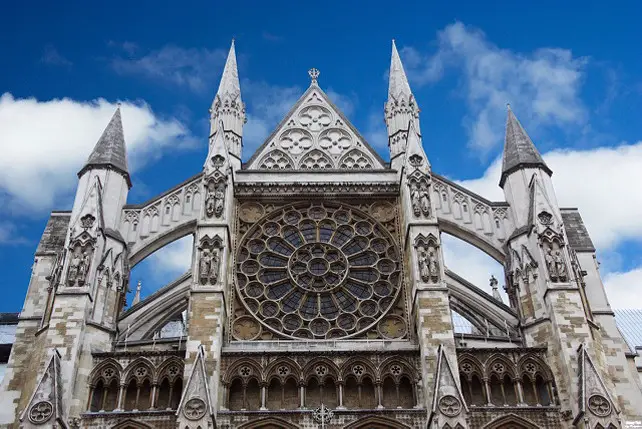
Westminster Abbey is a quintessential example of Gothic architecture, characterized by its pointed arches, ribbed vaults, and flying buttresses. The general layout of the abbey follows the traditional Latin cross plan, with a long nave, transepts, and a choir. The dimensions are grand, with the nave stretching over 100 meters and the height of the towers reaching nearly 70 meters, creating a sense of awe and reverence.
One of the key structural innovations of the abbey is the use of flying buttresses. These external supports allowed for the construction of higher walls and larger windows, a hallmark of Gothic architecture. The ribbed vaults, another significant feature, provided additional structural stability while creating an intricate and visually appealing ceiling pattern. These innovations not only enhanced the aesthetic appeal of the abbey but also demonstrated the advanced engineering skills of medieval builders.
The facade and towers of Westminster Abbey are equally impressive. The west facade, with its twin towers designed by Sir Christopher Wren and Nicholas Hawksmoor, is a striking example of Gothic design. The intricate carvings and statues adorning the facade depict various religious and historical figures, adding to the abbey’s rich tapestry of visual storytelling. The cloisters and chapter house, with their beautiful vaulted ceilings and detailed stonework, further exemplify the Gothic style and serve as spaces for reflection and contemplation.
Stained Glass and Interior Decoration
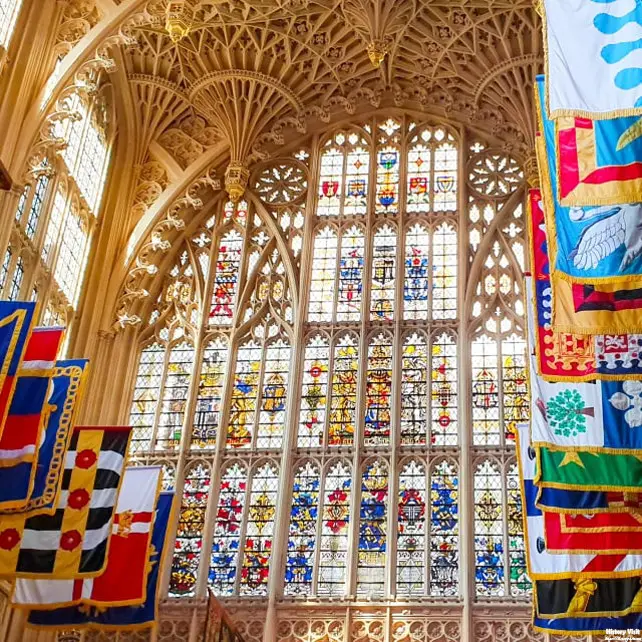
The stained glass windows of Westminster Abbey are among its most captivating features, illustrating a rich tapestry of biblical stories, saints, and historical figures. These windows, many of which date back to the medieval period, are renowned for their vibrant colors and intricate designs. The light filtering through the stained glass creates a mesmerizing effect, enhancing the spiritual ambiance of the abbey.
The historical context of these stained glass windows is significant. They were created during a time when visual storytelling was essential for educating the largely illiterate population. Each window serves as a visual narrative, depicting scenes from the Bible and the lives of saints. The craftsmanship involved in creating these windows is remarkable, with artisans using various techniques to achieve the vivid colors and detailed imagery that continue to captivate viewers today.
In addition to the stained glass, the interior of Westminster Abbey is adorned with numerous other decorative elements. The intricately carved choir stalls, the ornate altar, and the elaborate tombs and memorials all contribute to the abbey’s grandeur. These elements reflect the artistic and religious fervor of the medieval period, showcasing the abbey as a place of worship and a monument to artistic achievement.
Sculptural and Monumental Decoration
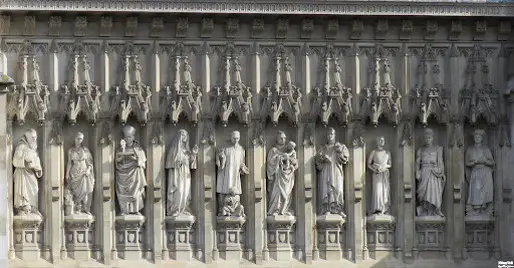
Westminster Abbey’s sculptural and monumental decorations are a testament to the artistry and craftsmanship of the Gothic period. The exterior of the abbey is adorned with a plethora of sculptures that serve both decorative and didactic purposes. The portals, particularly the north and south transepts, are among the most notable, featuring a rich array of figures and scenes from the Old and New Testaments.
The sculptures on the portals are renowned for their expressive quality and detailed craftsmanship. Figures of apostles, saints, and biblical characters are depicted with a sense of realism and individuality that was innovative for its time. These sculptures not only enhance the abbey’s aesthetic appeal but also convey complex theological concepts and narratives to the medieval viewer.
Inside the abbey, the sculptural decorations continue to impress. Westminster Abbey is home to numerous tombs and memorials, including those of monarchs, statesmen, and cultural icons. The tombs of monarchs, such as Elizabeth I and Mary, Queen of Scots, are particularly notable for their elaborate designs and historical significance. Poet’s Corner, another highlight, is dedicated to the memory of famous poets, writers, and musicians, reflecting the abbey’s role as a cultural as well as a religious institution.
Religious and Cultural Importance
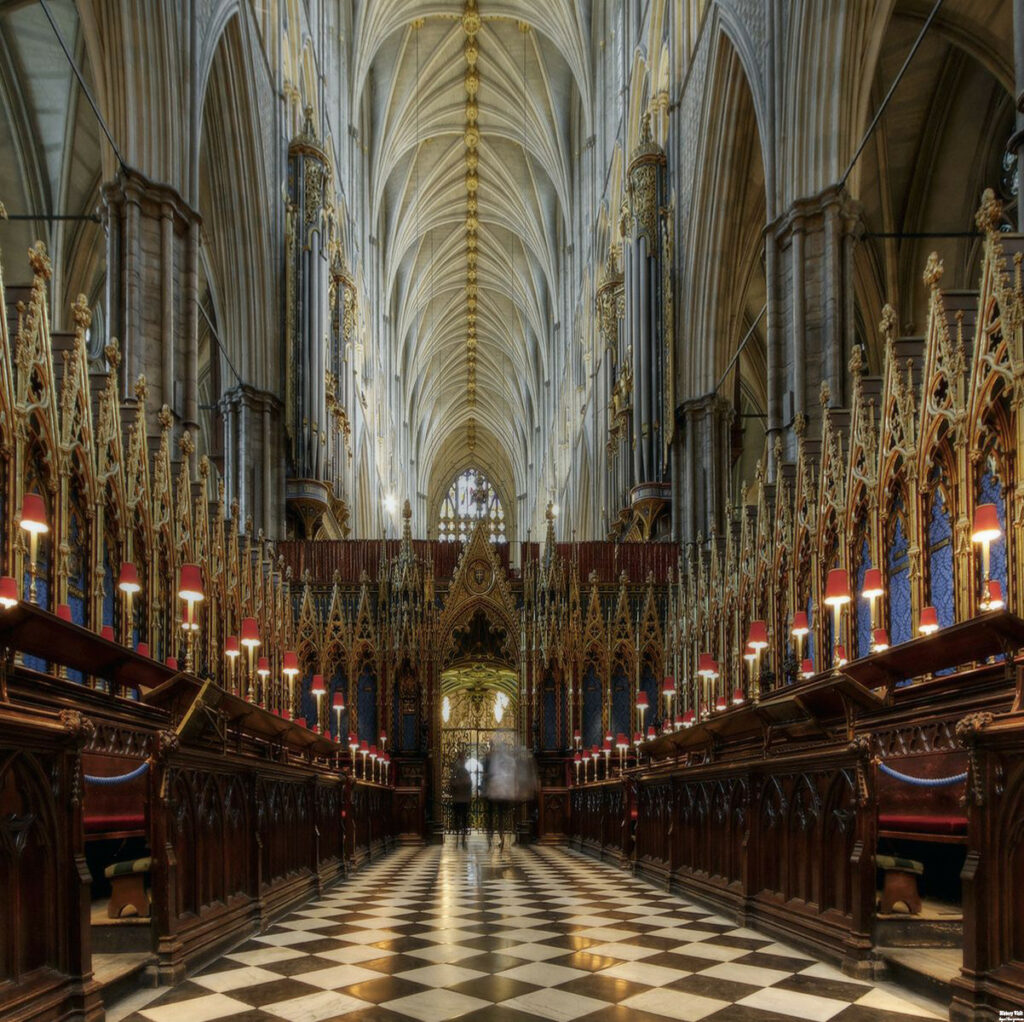
Westminster Abbey holds a unique place in the religious and cultural life of England. It has been the coronation site for English and British monarchs since the coronation of William the Conqueror in 1066. This long-standing tradition underscores the abbey’s significance as a symbol of royal authority and continuity. The coronation ceremonies, with their elaborate rituals and symbolism, highlight the abbey’s role in the nation’s history.
In addition to coronations, Westminster Abbey has hosted numerous royal weddings and funerals. These events have drawn international attention and underscored the abbey’s role as a focal point of national identity and tradition. The weddings of Prince William and Catherine Middleton in 2011, and Princess Elizabeth (now Queen Elizabeth II) and Philip Mountbatten in 1947, are just two examples of the many significant events held at the abbey.
The influence of Westminster Abbey on Gothic art and architecture is profound. Its design and decorative elements have inspired countless other churches and cathedrals throughout Europe. The abbey’s artistic and architectural innovations have left a lasting legacy, making it a key reference point in the study of medieval art and architecture. Its continued use and preservation ensure that its influence will endure for generations to come.
Restoration and Preservation

The preservation of Westminster Abbey has been a priority throughout its history, with numerous restoration efforts undertaken to maintain its structural integrity and artistic treasures. One of the most significant restoration projects took place in the 19th century under the guidance of Sir George Gilbert Scott. His work focused on restoring the abbey’s medieval features while addressing the wear and tear of centuries.
Modern preservation efforts face different challenges, including environmental factors, pollution, and the sheer age of the building. Recent projects have aimed to address these issues through meticulous cleaning and conservation techniques. The cleaning of the stonework, for example, involves careful methods to remove accumulated dirt and pollutants while preserving the original material. Advanced techniques are also used to restore and protect the stained glass windows.
Looking to the future, ongoing conservation plans are essential to maintain Westminster Abbey’s condition. These efforts require collaboration between experts in various fields, including architecture, art history, and materials science. Funding and public support also play a crucial role in ensuring that this UNESCO World Heritage site remains protected for future generations to admire and study.
Westminster Abbey Today

Today, Westminster Abbey continues to be a major tourist attraction, drawing millions of visitors each year. Its status as a UNESCO World Heritage site underscores its global significance and helps attract international attention. The abbey’s majestic architecture, historical significance, and artistic treasures make it a must-see destination for those interested in history, art, and religion.
Despite its popularity as a tourist site, Westminster Abbey remains an active place of worship. Regular services, including daily prayers, Sunday services, and special religious events, are held within its hallowed walls. The abbey also hosts concerts and cultural events, blending its spiritual functions with its role as a cultural hub. This combination of religious and cultural activities ensures that the abbey remains a vibrant part of London’s community.
The impact of Westminster Abbey on contemporary culture is profound. It serves as a source of inspiration for artists, writers, and scholars, who continue to draw from its rich history and artistic heritage. The abbey’s enduring presence is a testament to the timeless appeal of Gothic architecture and the enduring power of human creativity and faith.
Conclusion
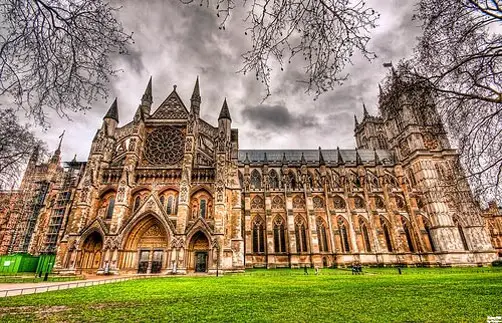
Westminster Abbey stands as a testament to the heights of human achievement in architecture, art, and spirituality. Its historical significance, architectural innovations, and artistic treasures make it a unique and invaluable part of our cultural heritage. From its origins in the medieval period to its continued relevance today, the abbey embodies the enduring legacy of Gothic art and architecture.
The intricate stained glass windows and sculptural decorations not only showcase the skill of medieval artisans but also serve as a visual narrative of the Christian faith. Its role as a coronation site and cultural landmark has shaped the history and identity of England, influencing generations of visitors and scholars.
As we look to the future, the preservation of Westminster Abbey remains a priority. Ensuring that this architectural masterpiece endures for future generations requires ongoing efforts and support. Westminster Abbey’s enduring legacy as a symbol of human ingenuity and devotion will continue to inspire and captivate those who behold its splendor.


